Red Bull Hardline is one of the gnarliest races on the downhill calendar, with riders facing incredibly difficult technical sections sandwiched between some of the biggest jumps Wales has to offer.
The event takes place in the Dyfi Valley and is the brainchild of former professional downhill rider Dan Atherton.
Red Bull Hardline attracts talent from around the world, with the best freeride and downhill riders invited to the start line each year to compete for the prestigious title.
Last year, we saw Canadian youngster Jackson Goldstone take victory on his first visit to the event, with three-time winner Bernard Kerr experiencing an unlucky weekend and stacking it hard in practice, then crashing on his race run.
Although this year's event was cancelled due to inclement weather conditions, we still sniffed around the pits on the lookout for new bike tech.
Due to the complexity of the course, Hardline can be the scene of many weird and wonderful setups, as riders look to carry speed through the technical sections while avoiding bottoming out on the enormous jumps and drops.
Here are three bikes from Bernard Kerr, Jono Jones and George Brannigan that caught our eye.
Jono Jones’ Propain Rage 3
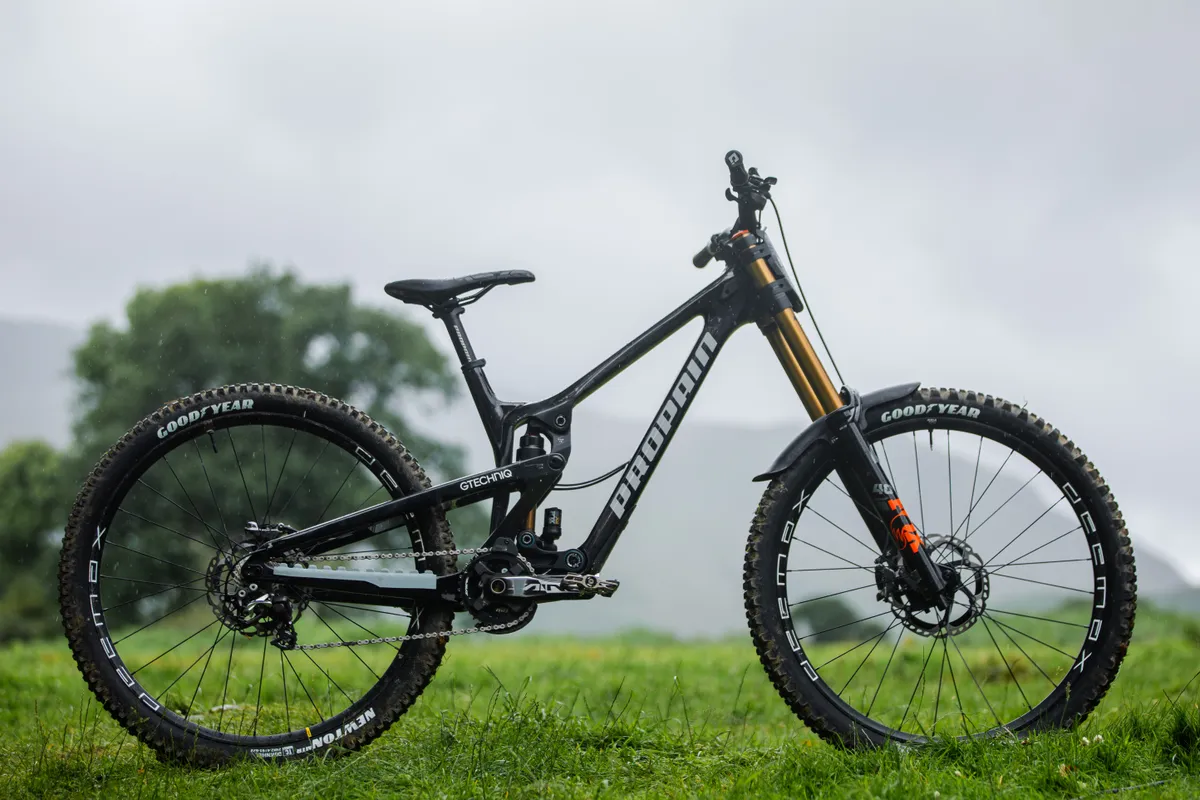
After missing out last year due to injury, Jono Jones was on hand to give us an inside perspective on how riders get ready for their race run while ticking off some of the big features on the course.
Jones’ Propain Rage 3 features flashes of Kashima on the Fox Factory 40 forks and X2 Factory rear shock.
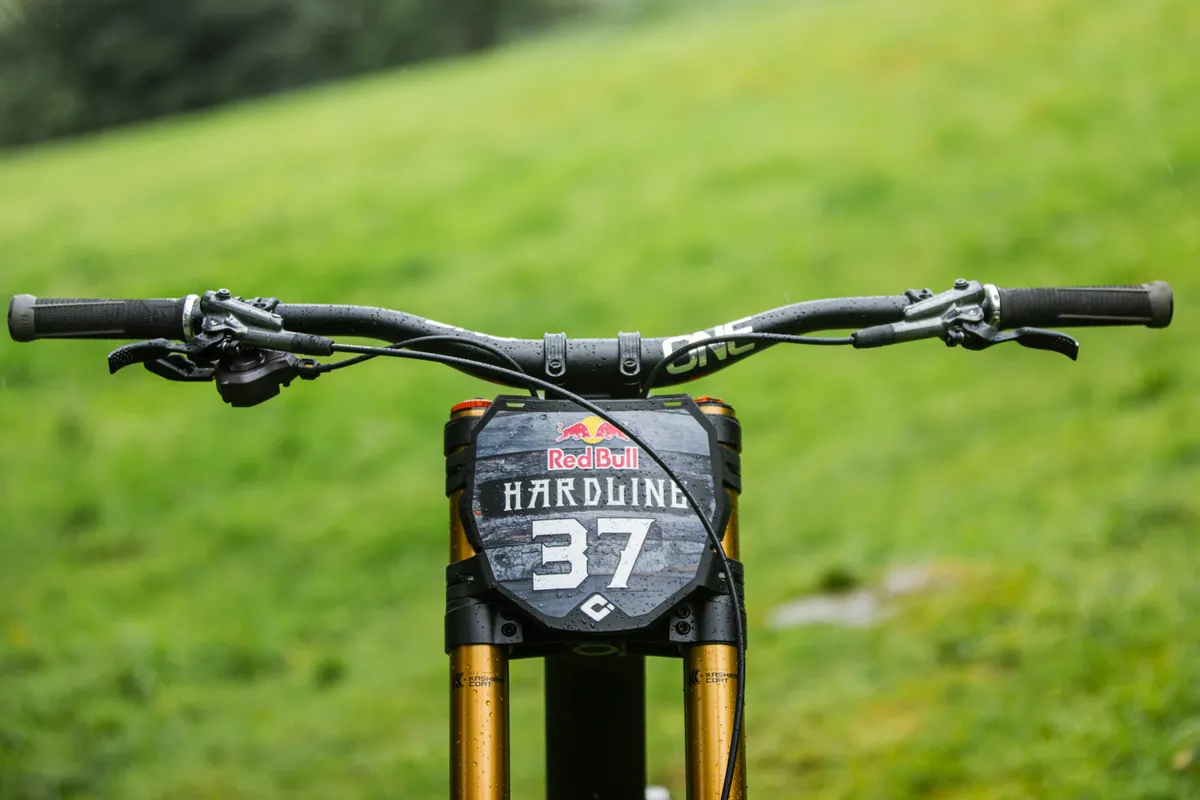
Jones is running higher pressures than he usually does in his suspension, with 112psi in the fork alongside a couple of tokens, while in the rear he's running 290psi.
“Because I’m not racing, it means I can set the bike up more for the jumps as I’m not looking for speed through the rocks," he explains.
"A lot of riders struggle with setting up for the jumps to the detriment of the technical bits.”
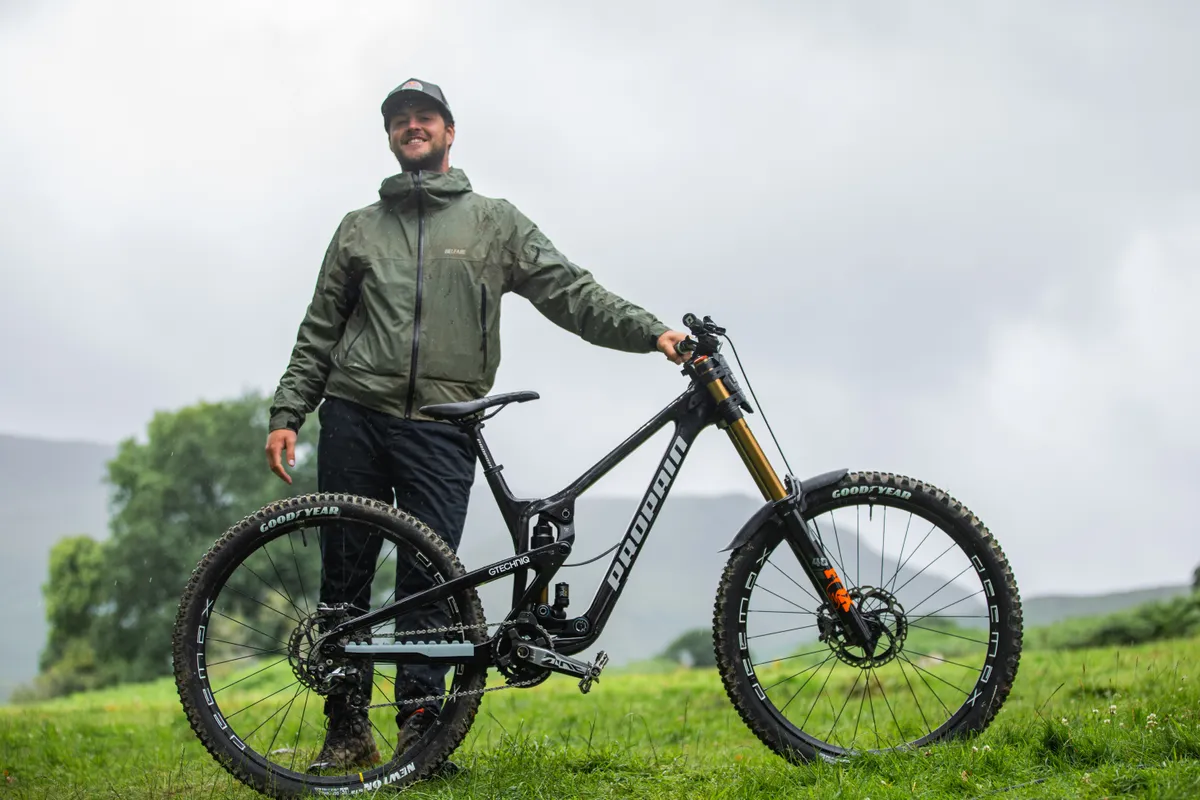
Apart from this, the Propain Rage 3 remains unchanged from his usual setup, with the bike featuring a Mavic Deemax 29in wheelset booted in Goodyear Newton tyres.
Jones says he uses higher tyre pressures to make sure the bike remains stable on lips and avoids any squirrely landings.
Unlike some riders, Jono isn’t riding with tubeless tyre inserts on the course, showing confidence in his downhill casing tyres and wheel combination.
Dealing with the rain in Wales is difficult at the best of times, but with the conditions presented at Hardline this year, Jones decided to ceramic coat his bike. He uses a front mudguard to keep spray out of the way.
Jones’ Propain Rage 3 also features an interesting saddle placement, pushed completely forward. He says this was a result of the tyre hitting the saddle when bottoming out and has decided to leave it there.
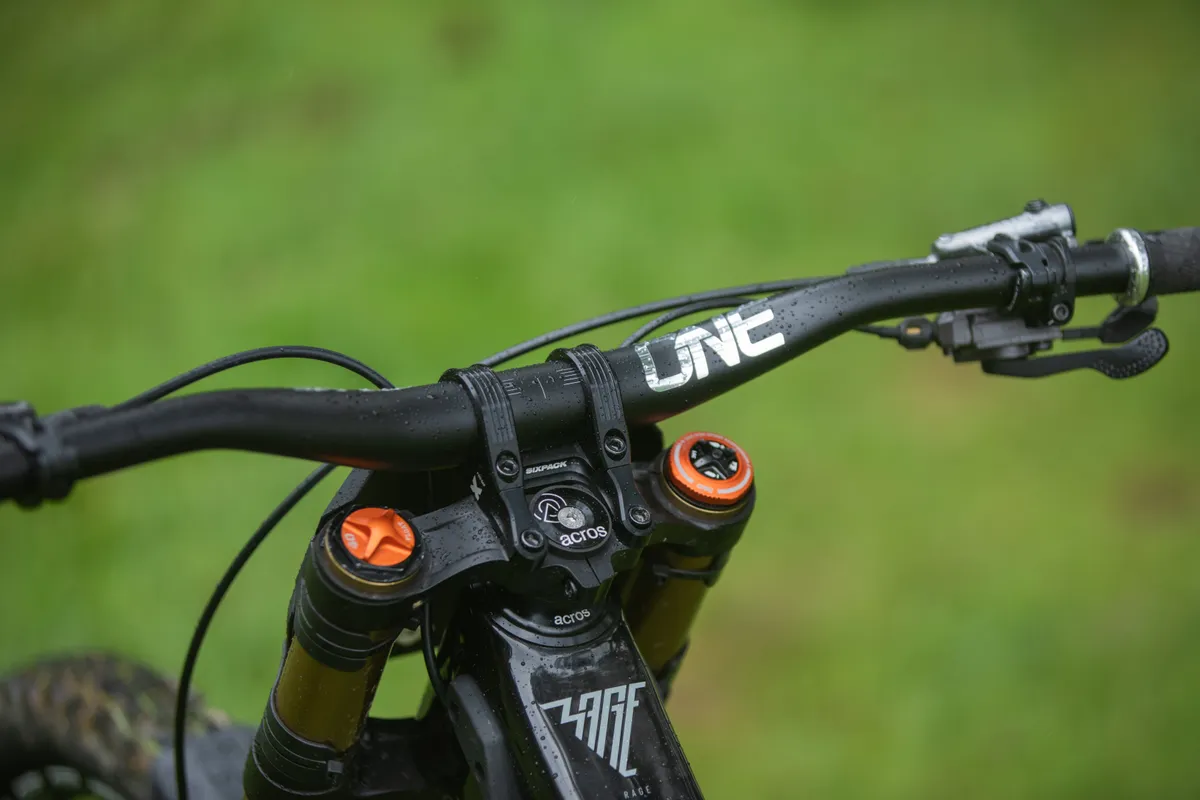
The cockpit of the bike features an aluminium OneUp handlebar, which is attached to the fork using a Sixpack Millenium direct-mount stem.
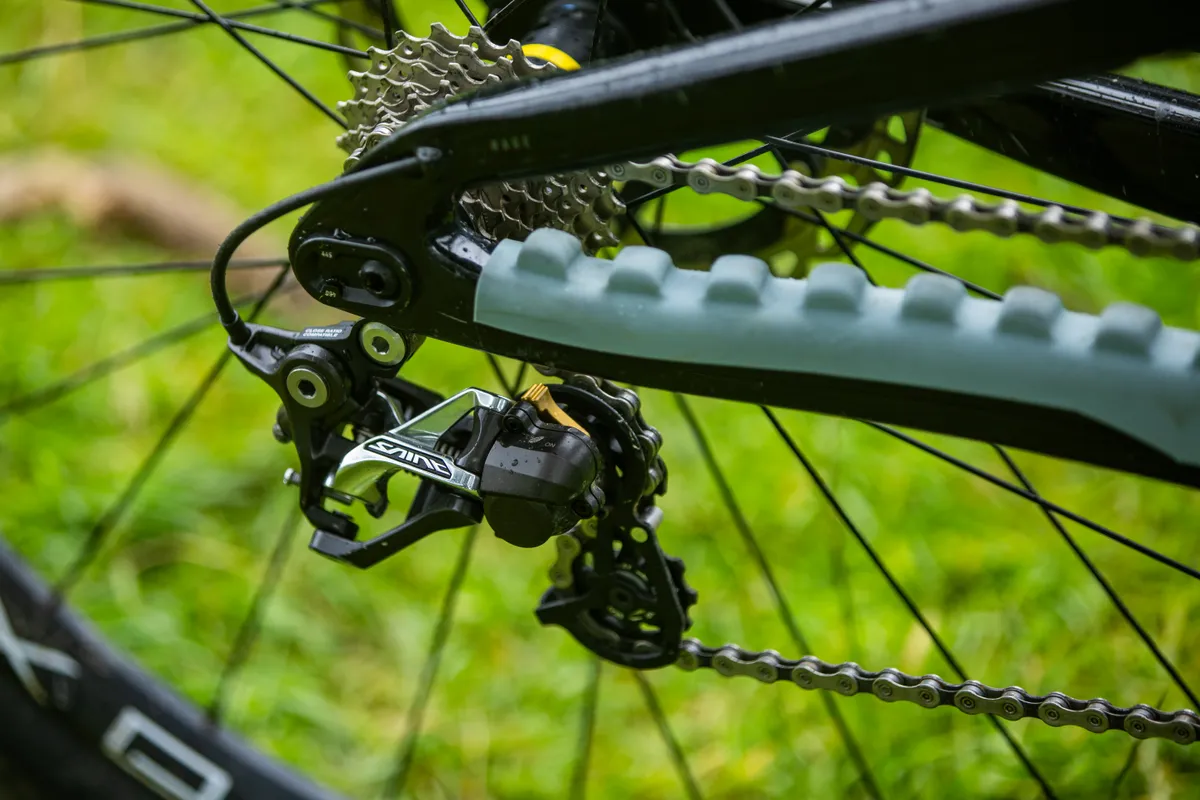
The groupset is taken care of by Shimano, with the downhill-specific Saint featuring on the bike, which provides a smaller gear selection than regular drivetrains.
Bernard Kerr’s prototype Pivot Phoenix
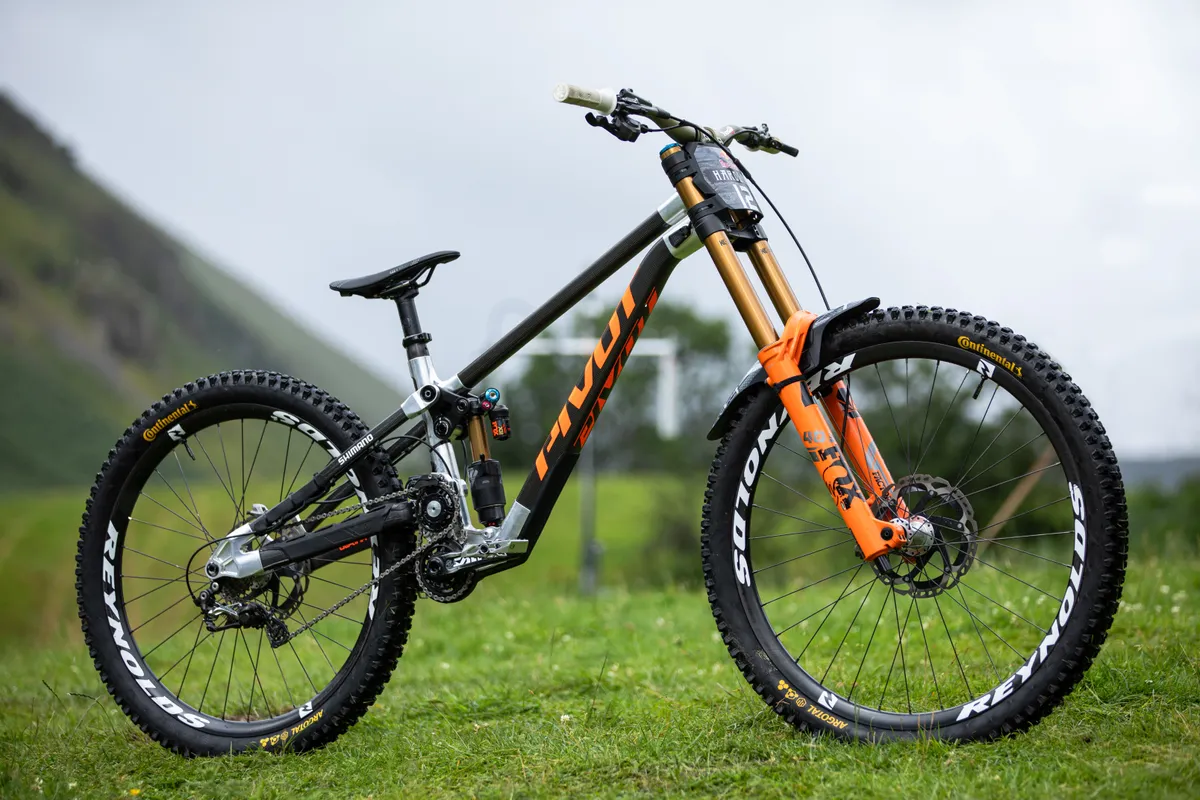
A highlight of this year's event was getting a more detailed glimpse of three-time Hardline winner Bernard Kerr’s prototype Pivot Phoenix downhill bike.
While Kerr was tight-lipped when it came to specific details about the bike, we have some information from when it was first spotted at Lenzerheide early this year.
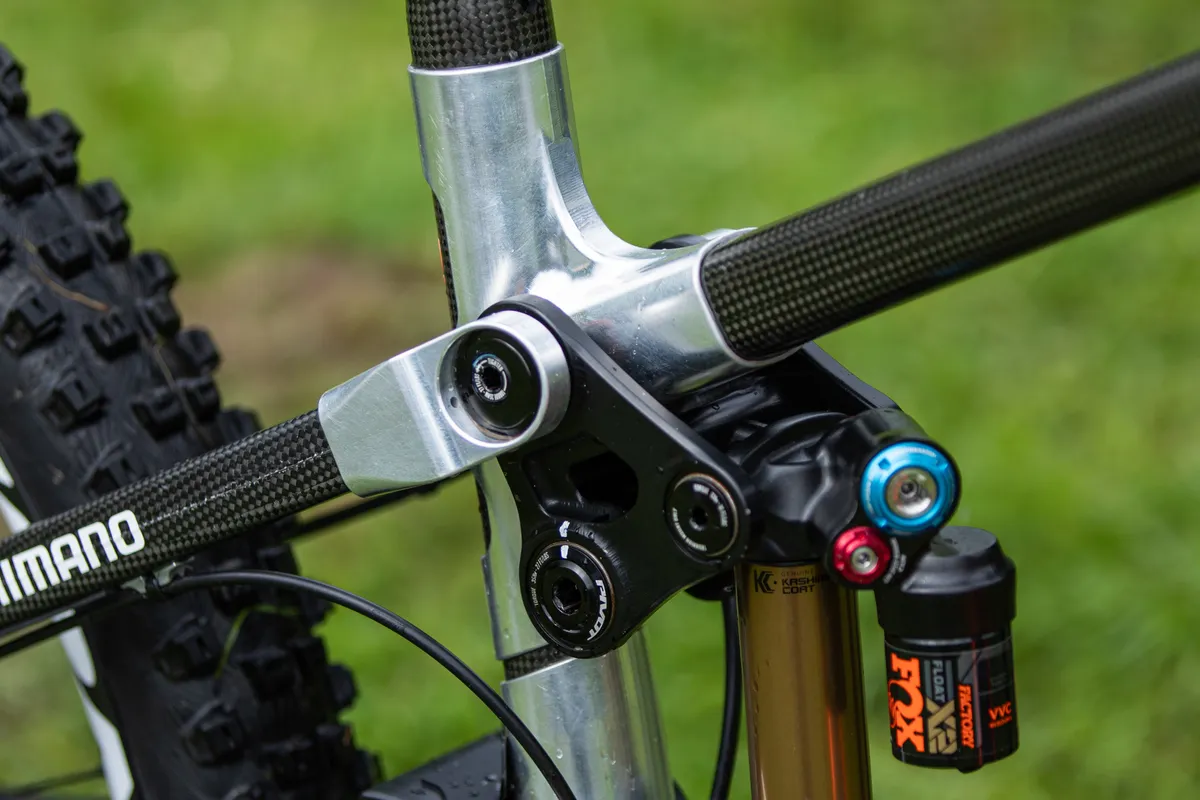
The bike features an Atherton-esque frame construction with raw carbon tubes bonded to chrome lugs.
This technique enables changes to be made to the bike in the development process without needing to create new carbon moulds or prototypes using aluminium frames.
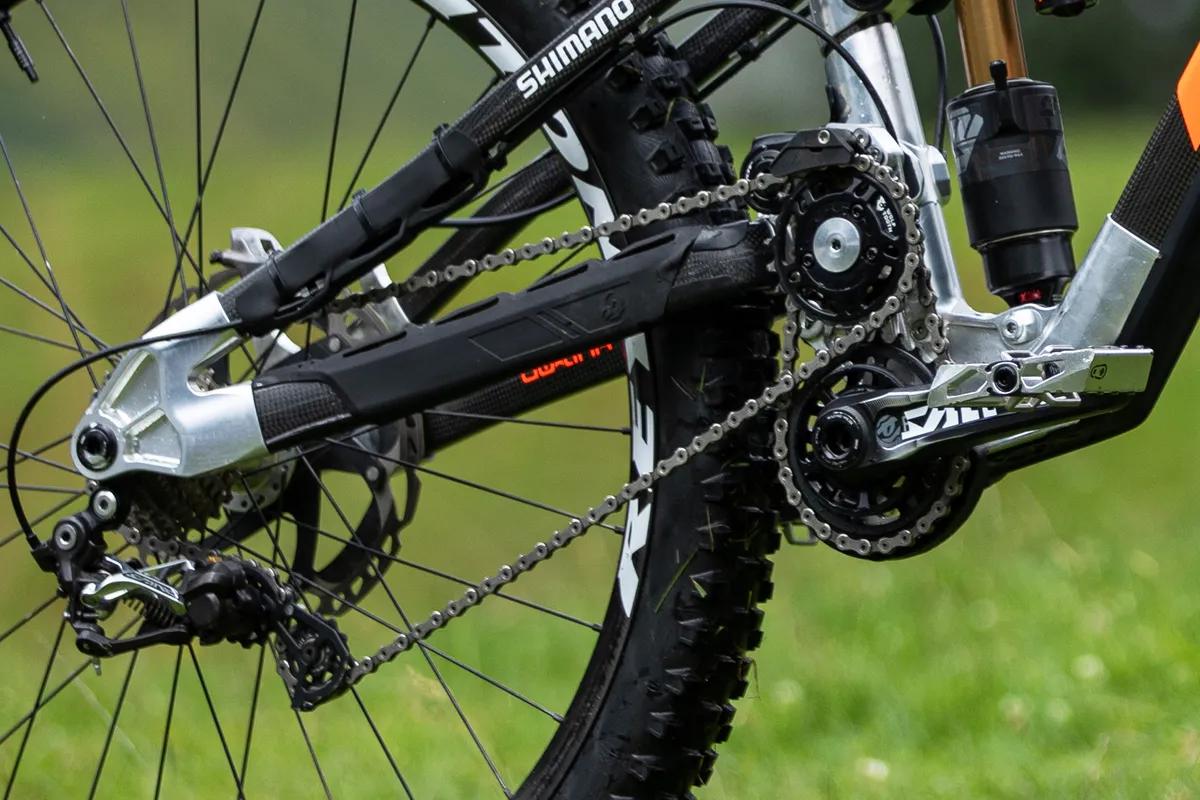
The bike appears to be using a high-pivot suspension system, which has become increasingly popular in gravity-focused disciplines because it gives the bike a rearward axle path.
A notable difference from other high-pivot bikes is the idler pulley, which features two separate chains. One short chain is connected to the chainring, while another connects to the cassette.
The design is certainly unconventional, and only time will tell if the system makes it to the production bike.
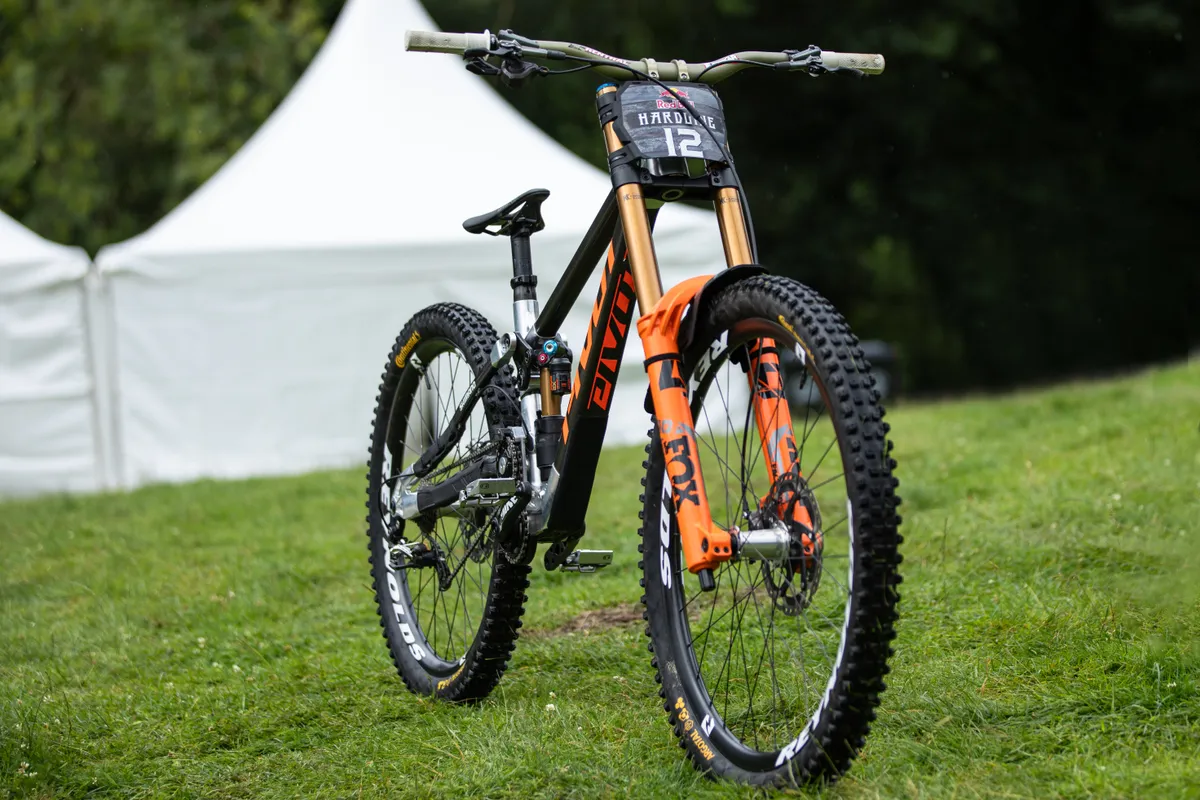
The bike has a mullet setup, which is a first for Kerr, who has previously ridden 29in wheels front and rear when racing.
Reynolds Blacklabel carbon wheels are used, with a 29in size on the front and a 27.5in on the rear.
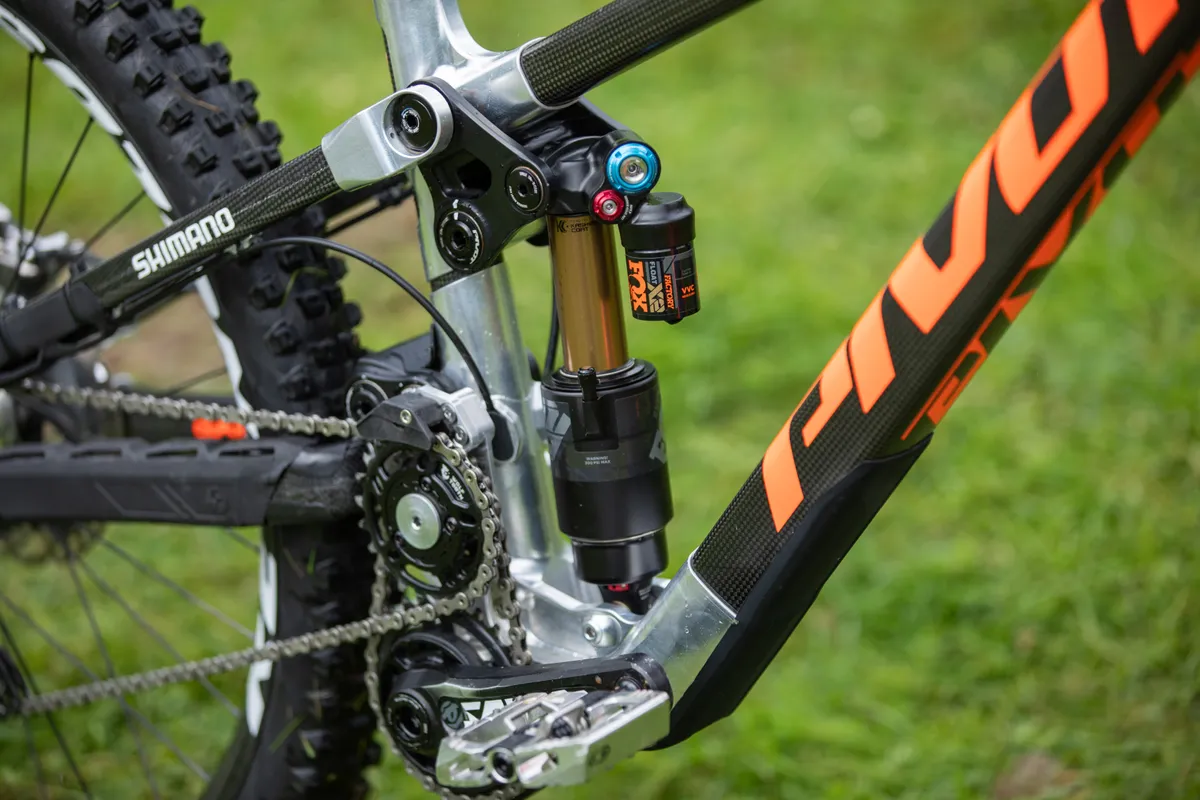
As with many riders, Kerr was running higher pressures in his suspension than usual. His Fox Factory 40 forks were increased from 90psi to 92psi and his X2 Factory rear shock from 230psi to 245psi, while also adding some more compression.
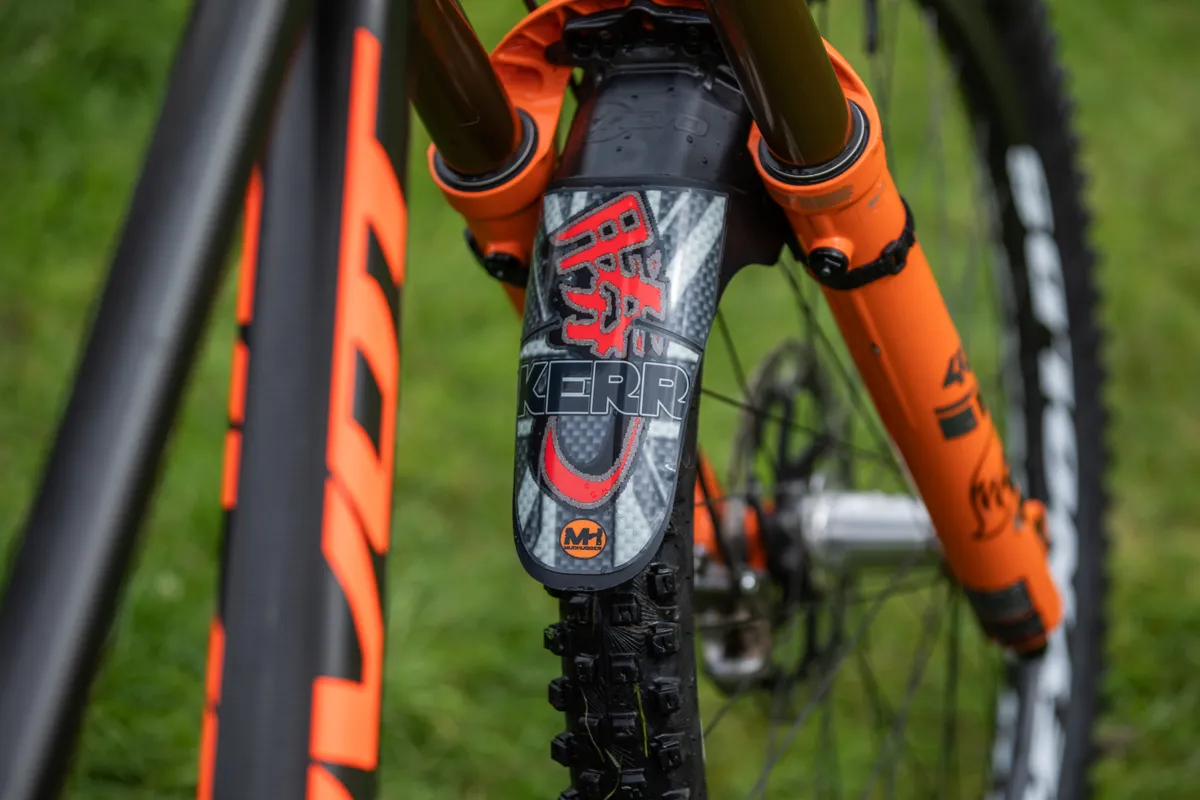
To cope with the wet conditions, Kerr fitted intermediate Continental Argotal tyres to his Reynolds wheels and a Mudhugger mudguard to the front fork, featuring his personal livery.
Other oddities on Kerr’s bike include a WTB gravel saddle. Kerr says he prefers this to downhill saddles because it has more padding, while still being short enough for clearance from the rear wheel.
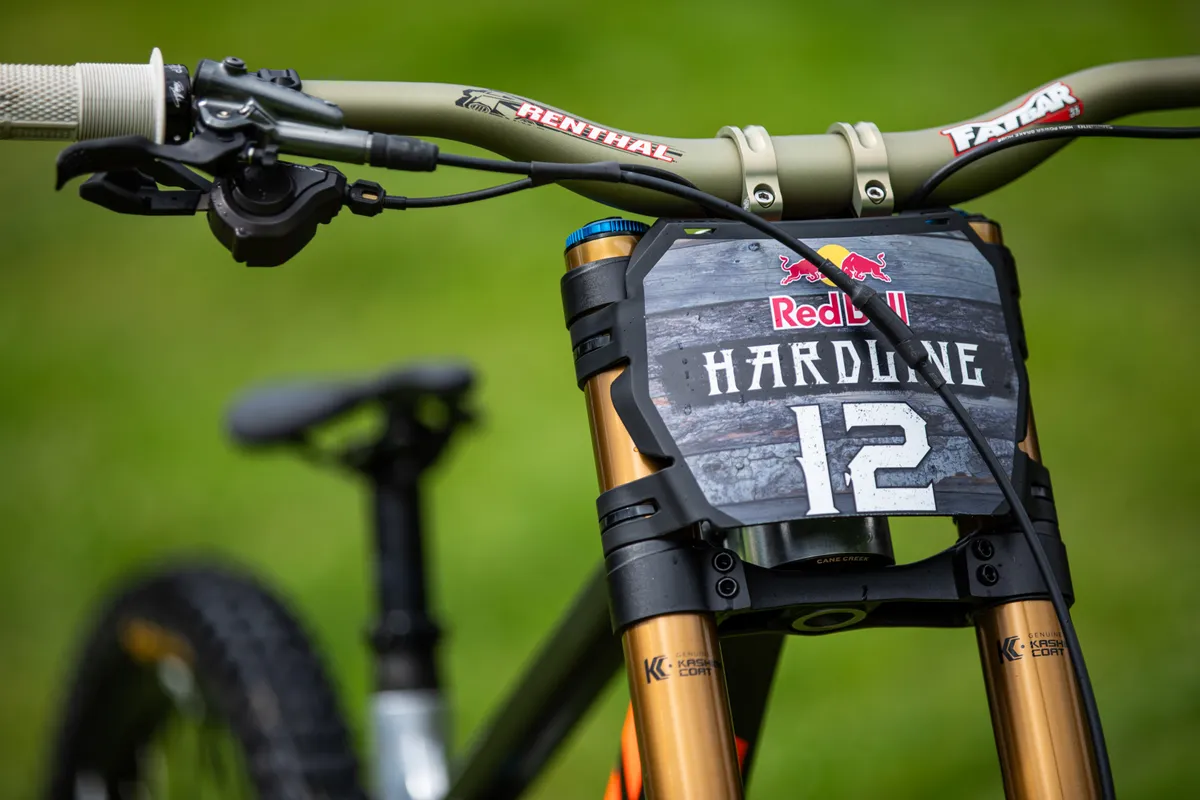
The cockpit of the bike is a Renthal affair, with Kerr choosing to run aluminium 35mm Fatbars and an Integra direct-mount stem.
Sponsored by Shimano, the bike features a Saint drivetrain, though Kerr runs XTR Trail four-piston brakes.
George Brannigan's NS Fuzz
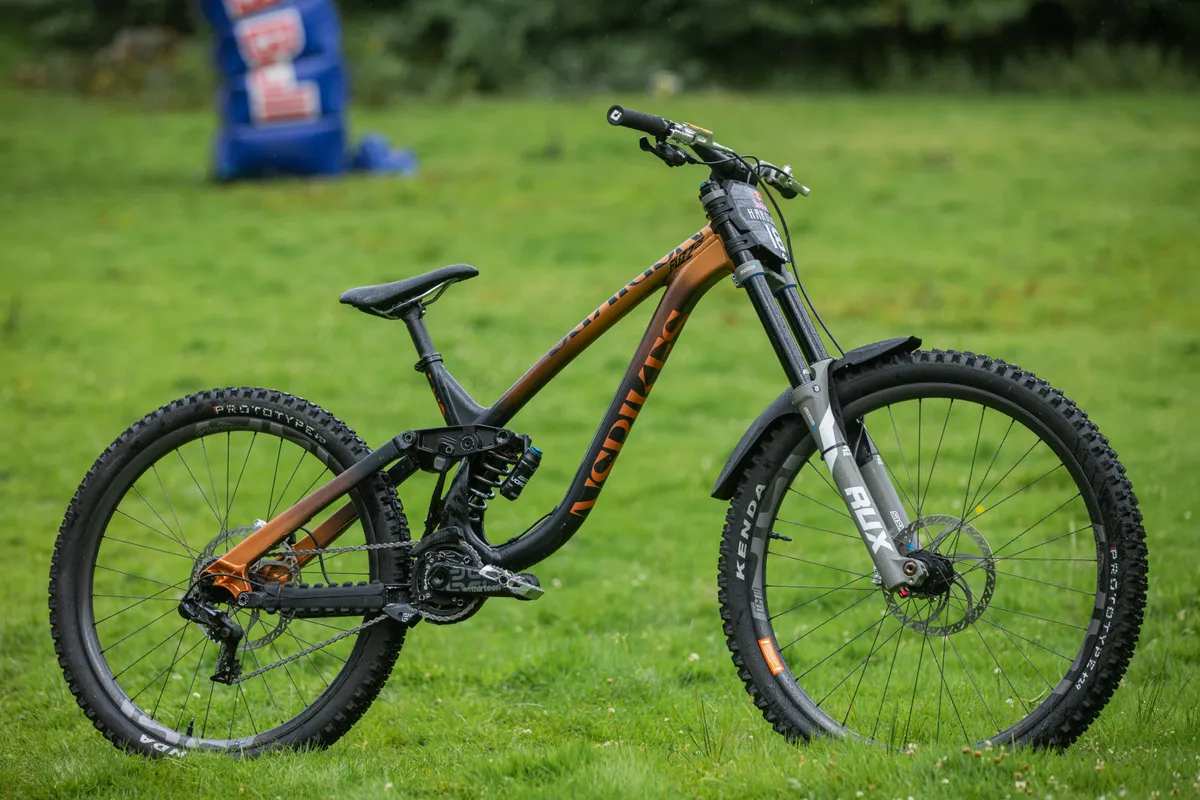
George Brannigan was flying during practice, with the Kiwi attempting the 90ft jump in the middle section of the track for the first time.
Brannigan was riding his NS Fuzz, which he has been racing in the UCI Downhill World Cup this year.
The bike features the six-bar suspension system that was seen on a prototype Fuzz last year. The brand says it enables more accurate refining of the suspension kinematics.
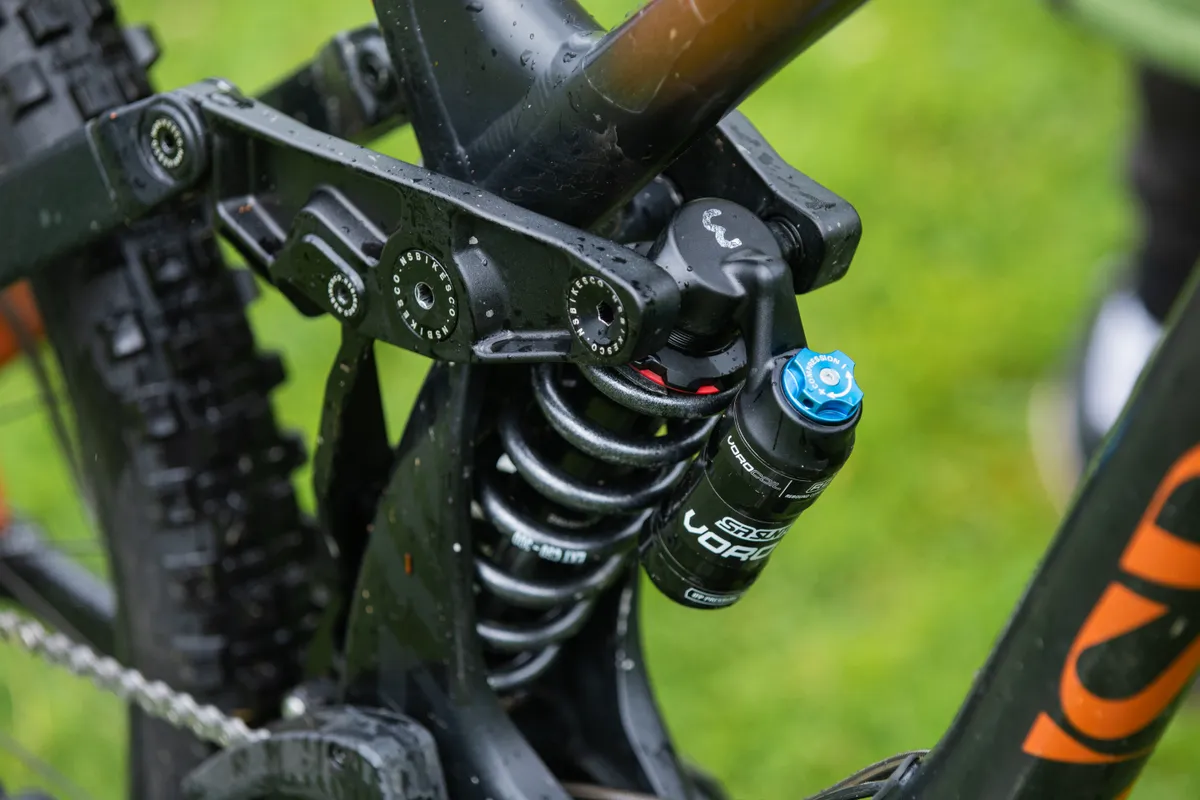
Being sponsored by SR Suntour, Brannigan’s bike features a RUX38 fork, which has 200mm of travel and a Voro coil shock.
The rear triangle of the bike features a dual-sided chainstay protector, which should mute chain slap on even the heaviest of landings.
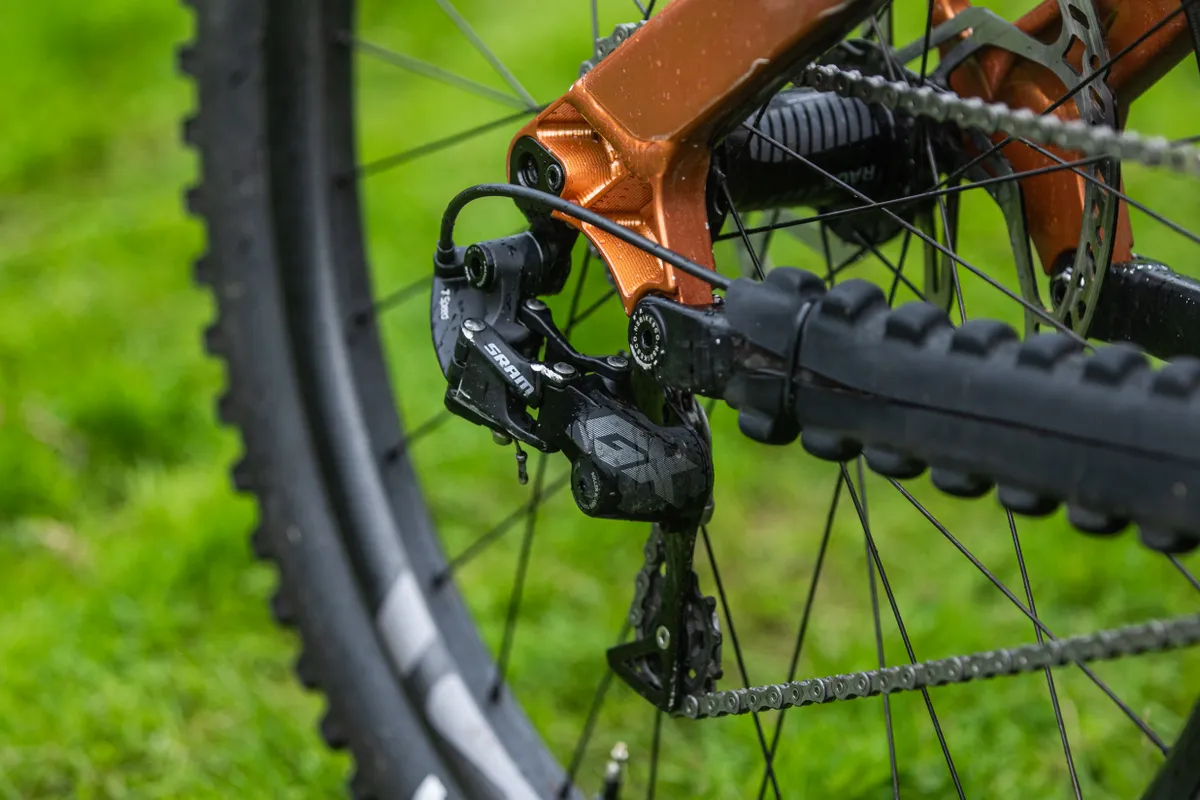
For the drivetrain, a SRAM GX DH seven-speed derailleur is used, currently the highest tier in the brand's range to offer a downhill rear derailleur.
Due to the lack of ascents, downhill derailleurs don’t have to cater for higher gears for climbing, and can be made smaller, which keeps them out of the way of rocks and trail debris.
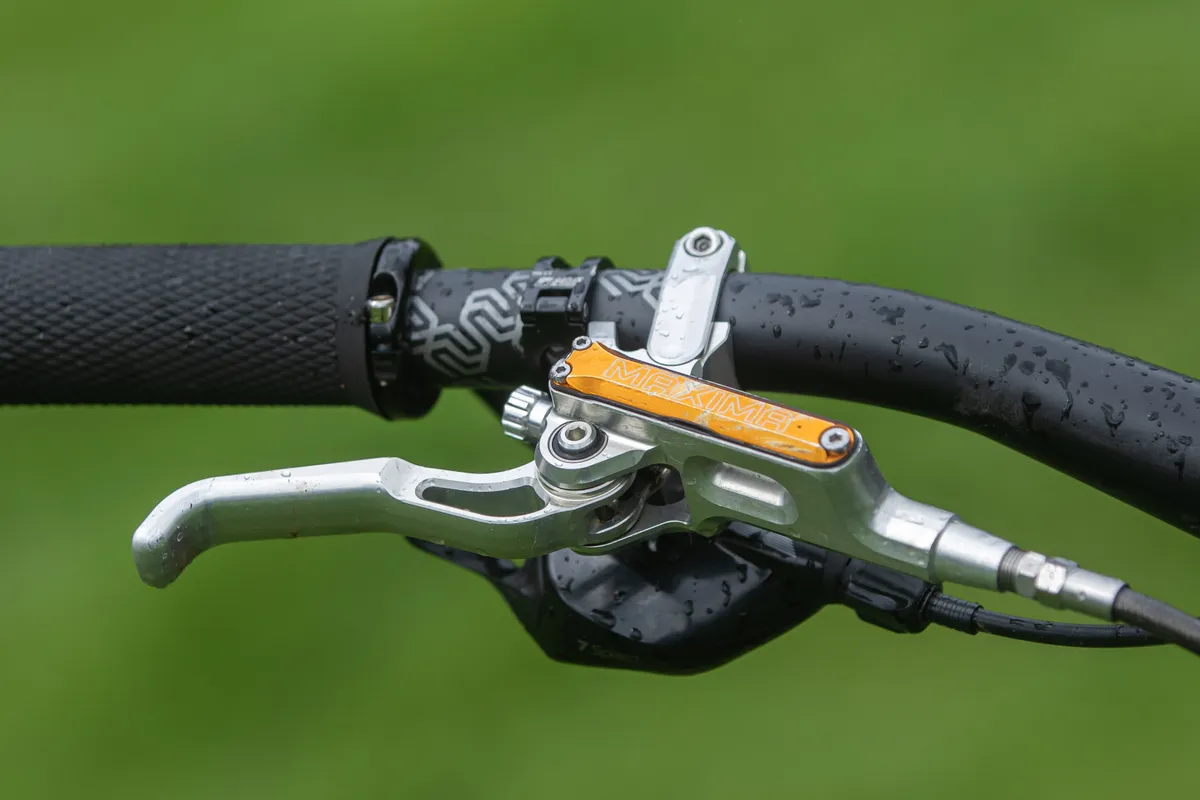
German brake specialist Trickstuff provides the stoppers, with the Maxima model being designed for downhill competitions and featuring a CNC-machined construction.
The bike is rolling on an e*thirteen LG1 DH wheelset wrapped in prototype Kenda tyres, which looked suitably knobbly for the weather conditions.

